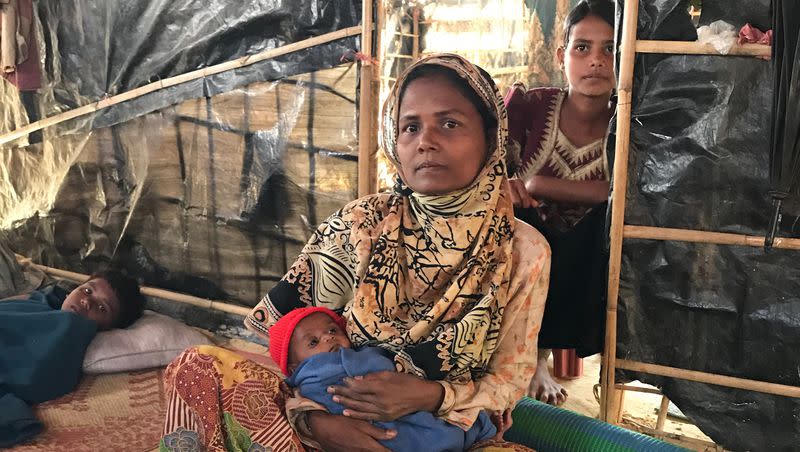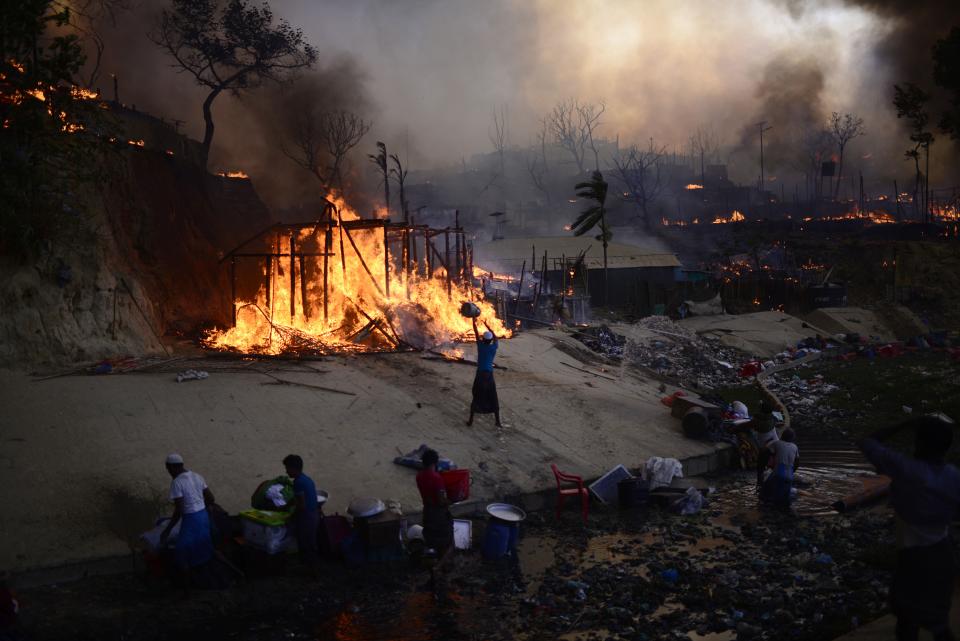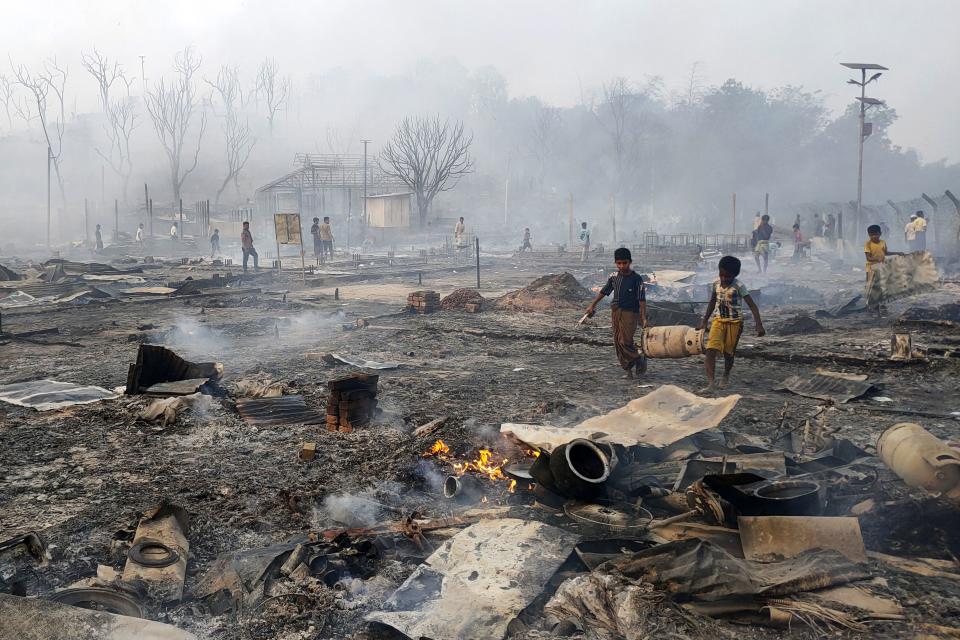Opinion: A million forgotten refugees

The first thing that struck me was the sheer, overwhelming mass of humanity. Literally wall-to-wall tents, with orange tarps for the roofs, black tarps for the side “walls” and bamboo supports were the homes for a million people. My first visit to a Rohingya refugee camp in Cox’s Bazar, Bangladesh, was in January 2018, less than six months after a mass exodus from genocidal attempts on Rohingya lives in Myanmar.
One of the refugees I met was sitting on the floor of her tent with a new baby in her lap and and her other children milling around. Two months before I met them, they had made their way to the “no man’s land” between Myanmar and Bangladesh. There, they waited for two weeks before they could cross the river separating the two countries. They had no food, so she, her husband and their seven children ate leaves and grass to keep something in their bellies.
She was also eight months pregnant.
Once in Bangladesh, their family was provided with shelter and some food — rice, lentils and oil. Shortly after arriving, this 35-year-old refugee gave birth to her eighth baby, unattended, on the dirt floor of her tent. Her name is lost to me now. I have no way to find her again. She has blended with the million other refugees that are seemingly forgotten by the rest of the world.
The shelters that the refugees were living in measure approximately 8 feet by 12 feet, and are without running water or electricity. Raw sewage ran down the hills in little rivulets — and I was there in the dry season. I saw my first case of rickets, a softening and weakening of the bones leading to a bowing of the legs that can become severe, as with the little boy I saw. The size of an average 2-year-old in the United States, he could barely stand and his cries signaled that he was in pain.
Those million refugees have now been in one of the largest refugee camps in the world for more than five years. That little baby born in the camps — if he’s still alive — has never known anything other than the camps, and he faces, at best, an uncertain future. Almost 50% of the refugees are under age 18.

Bangladesh is one of the poorest and most densely populated countries in the world. It has approximately half of the population of the United States crammed into an area around 32,000 square miles smaller than Utah. It also ranks as third in the world most often hit by natural disasters. The Bangladeshi government is not a signatory to the 1951 Refugee Convention nor its 1967 Protocol, and the country has struggled in its approach to refugees.
For starters, the Rohingya refugees have been treated as temporary, with repatriation back to Myanmar as the primary goal. Long term, that is likely a reasonable plan, but in the present and foreseeable future, it is unrealistic. Why would the Rohingya go back to a country where the military that tried to exterminate them is in charge?
Bangladesh has tried to resettle refugees on a silt island called Bhasan Char in the Bay of Bengal with limited success. Some refugees, growing increasingly desperate, are undertaking dangerous and often fatal sea crossings. The United Nations noted that the number of attempts spiked 360% in 2022, with more than 3,500 attempting sea crossings compared to about 700 in 2021.
Formal education for Rohingya children is prohibited. Human Rights Watch found that some Bangladeshi officials threaten the refugees with denial of aid, deportation and even arrest if the Rohingya continue with their own schools. Nonformal education is being offered under a joint agreement with the Bangladeshi government and nonprofit organizations, but the education programs are prohibited from teaching children in Bangla. All curriculum must be from Myanmar, and Rohingya school children must recite the national anthem of Myanmar.
“This curricula reminds them they belong to Myanmar where they will go back some day,” a deputy refugee commissioner told an AFP journalist.
Related
The unlikely tool that could help ease the burden of refugees in Europe
Photos: What is life like in a refugee camp? Refugees in Utah tell their stories
Once the eighth grade is completed, there are essentially no options for teens, or the adults. They are not allowed to work in Bangladesh. Girls often end up getting married off young, and boys are prime targets for drug traffickers, human traffickers and extremist groups that recruit from within the camps. To pile on to their difficulties, a deliberately set fire on March 5 left 15,000 Rohingya refugees homeless. A government official leading the probe said militant groups started the fire in order to dominate the camps.
The fire came a couple of weeks after the World Food Programme announced it would be forced to cut back its food assistance for all refugees, down to just $10 per person per month, due to lack of funding. As a point of reference, extreme poverty is considered to be anything under $1.90 per day. This food assistance is 30 cents per day.
Tom Andrews, U.N. special rapporteur on Myanmar, said, “These rations cuts are a stain on the conscience of the international community. ... Reversing these cuts in food aid is literally a matter of life and death for Rohingya families.”
According to The Washington Post, United Nations and Bangladeshi officials said less than half of the required funding is set to go to the Rohingya refugees this year. The war in Ukraine and other crises have siphoned off available funds and, as the Rohingya refugee influx passes five years, it’s no longer considered a crisis.
Tell that to the refugee mom of eight and her family.

Holly Richardson is the editor of Utah Policy.

